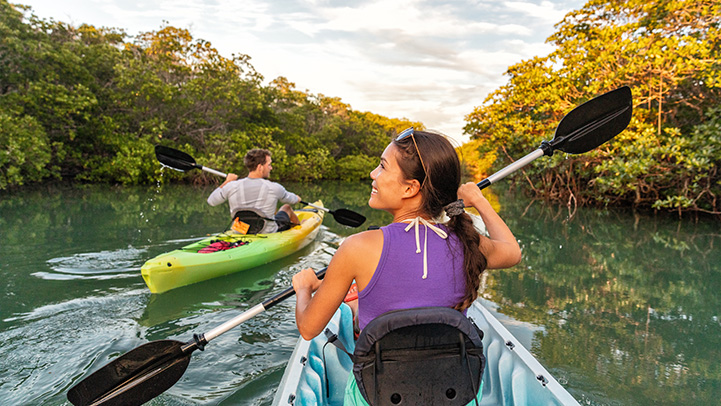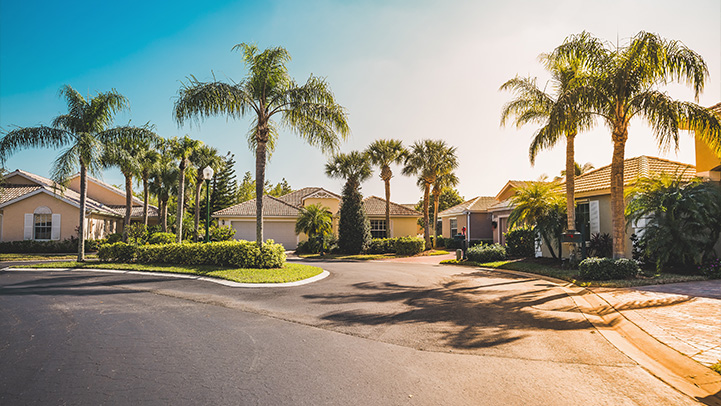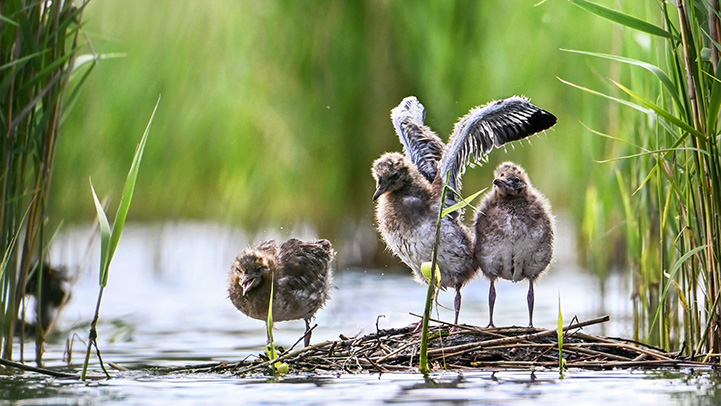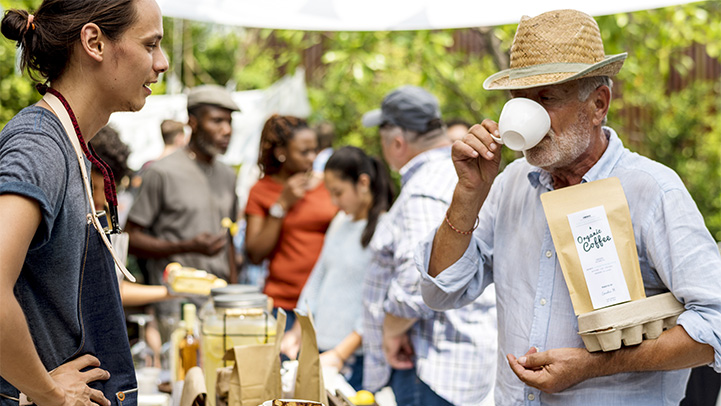You may have heard that there is no new water (H2O) on earth, only the same raindrops cycled over and over again. The water we drink and use to wash, flush, and irrigate is borrowed from the environment, where we pump it from underground, from reservoirs, and from rivers. In turn, whatever we put on land, or down the drain, eventually winds up in lakes, rivers, bays, and the Gulf of Mexico. Protecting water sources and preventing pollution keeps the waterways that support us healthy, in an endless cycle. That’s why all of us need to be in the know about H2O.
How often do we take clean flowing tap water for granted? A seemingly unlimited supply is piped directly into our homes for less than a penny per gallon. Even Florida, the land of liquid sunshine, is facing a thirsty future with population growth doubling water use by 2070. Using water wisely begins at home, with simple actions like repairing plumbing leaks, upgrading to water-saving fixtures and appliances, and adopting everyday conservation and disposal practices that become lifelong habits. Minimal up-front investments will pay immediate dividends in lower water bills.
Lush lawns aren’t so “green” when it comes to our environment. Half of household water on average goes to irrigation. Lawn fertilizer and pesticides can seep into the groundwater we drink and hitchhike with rainfall runoff to the bays and lakes where we play, threatening to spoil the very reasons we love living here. For a sustainable landscape, follow the Florida-Friendly Landscaping™ Program to reduce fertilizer use, replace high-maintenance turfgrass with eco-friendly plants, and curb stormwater pollution.
Water doesn’t recognize property boundaries, and your water protection efforts shouldn’t either. Across the Suncoast, neighbors are working together to protect and improve the water they share. Get involved with your neighborhood association to change maintenance practices to reduce water pollution. Lead by example with a pilot project to show neighbors that healthy ponds improve aesthetics, save maintenance costs, increase property values, and bring back the birds. Community projects like planting trees and marking storm drains also help protect downstream creeks and bays.
“We started having serious, serious erosion problems. We probably spent a good year or so investigating options. And when it came down to it, we finally decided we wanted to go inexpensively—we are not a big association with big bucks—and we wanted to go naturally. So one of the first things we did was stop mowing down to the water’s edge and plant the shoreline with native plants. And since then, it has helped start rebuilding our shoreline. Our pond is in such good health now, we were able to stock it with native fish. We have some people who have grandkids who now like to catch and release fish in our pond.”
— Carmen Mizzoni
Please tell us about your water-related success story. Here are a few questions to get you started: What changes are you making? Why? What has the process been like? What’s the impact? If selected, we will contact you for an interview to develop a feature story on the Green Living Toolkit.

Personal Benefits
Community Benefits

Clean, safe drinking water is essential for preventing short-term and chronic illnesses. It also encourages hydration, a cornerstone of healthy living. Water-based recreation contributes to mental and physical wellness.

Decreased water use saves money on utility bills and reduces the costs of community investment in new water or wastewater supplies.

Attractive, water-thrifty landscapes have terrific curb appeal. Efficient irrigation systems and healthy stormwater ponds are a marketable asset that reduce overall landscape maintenance costs. Well-managed stormwater ponds and protected wetlands reduce flooding and add aesthetic value.

Protecting wetlands and estuaries that support fish and wildlife, while storing 20-30% of the earth’s carbon, is an important community strategy for mitigating climate change. Wise use of water resources lessens the potential for sewer overflows, drought, saltwater intrusion, and pollution.

Efficient water use promotes self-sufficiency and helps avoid rate increases associated with the development of new water supplies. Managing water responsibly decreases energy costs, and supports smart, sustainable growth. Protecting water quality in our creeks and bays protects our quality of life.
This site protected by reCAPTCHA and the Google Privacy Policy and Term of Service apply.
©2025 Science and Environment Council of Southwest Florida | Site by Chariot.